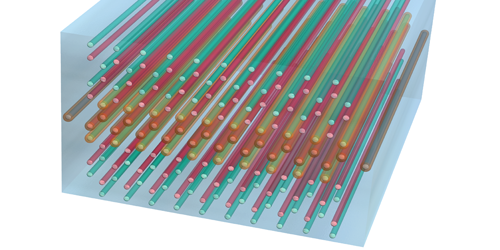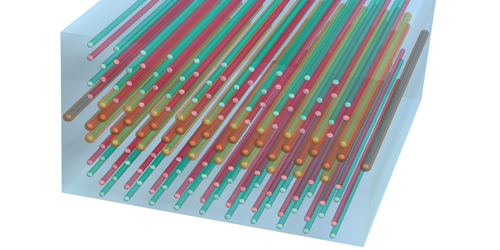Having the Edge on Optical Losses
Light traveling through optical fibers or waveguides often gets scattered by defects in the material. One potential way to decrease these losses would be to use optical equivalents of topological materials. Such photonic topological insulators would allow light to travel along their edges with reduced scattering, just as traditional topological insulators allow electrons to travel more freely along their edges. Jiho Noh from The Pennsylvania State University, University Park, and colleagues have built a photonic topological insulator using a honeycomb array of narrow waveguides. This arrangement, which exploits so-called valley-Hall edge states, is susceptible to some forms of scattering but is more practical than other topological schemes for use in photonic applications.
Valley-Hall edge states occur in a system whose momentum distribution has energy minima, called “valleys.” Each valley has a corresponding quantum number, which can be treated as a kind of spin. As such, valley-Hall edge states resemble topological spin-Hall edge states in that they spontaneously arise at a boundary between regions with different valley numbers. Previous work has generated valley-Hall edge states for electrons in specially engineered 2D materials.
For their optical system, Noh et al. created a refractive-index pattern in their waveguides that produced different valley states for the top and bottom of the array. They sent light through a side channel that was weakly coupled to the rest of the array. Under the right conditions, some of this light appeared in the waveguides along the boundary between the top and bottom regions—matching the predictions for a valley-Hall edge state. Although other types of edge states reduce scattering more effectively, the advantage of valley-Hall edge states is that they don’t have the challenging requirement of breaking time-reversal symmetry.
This research is published in Physical Review Letters.
–Michael Schirber
Michael Schirber is a Corresponding Editor for Physics based in Lyon, France.





